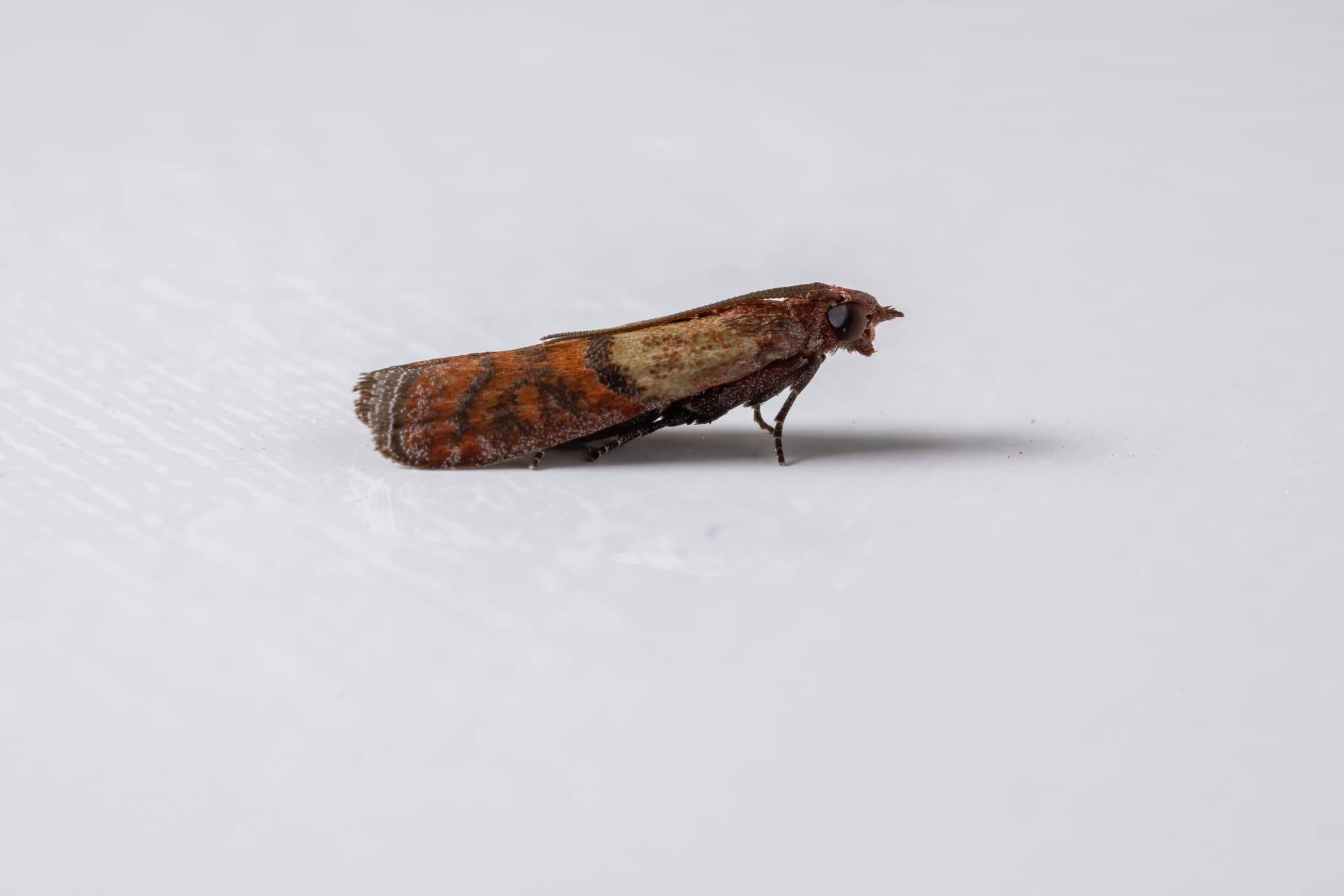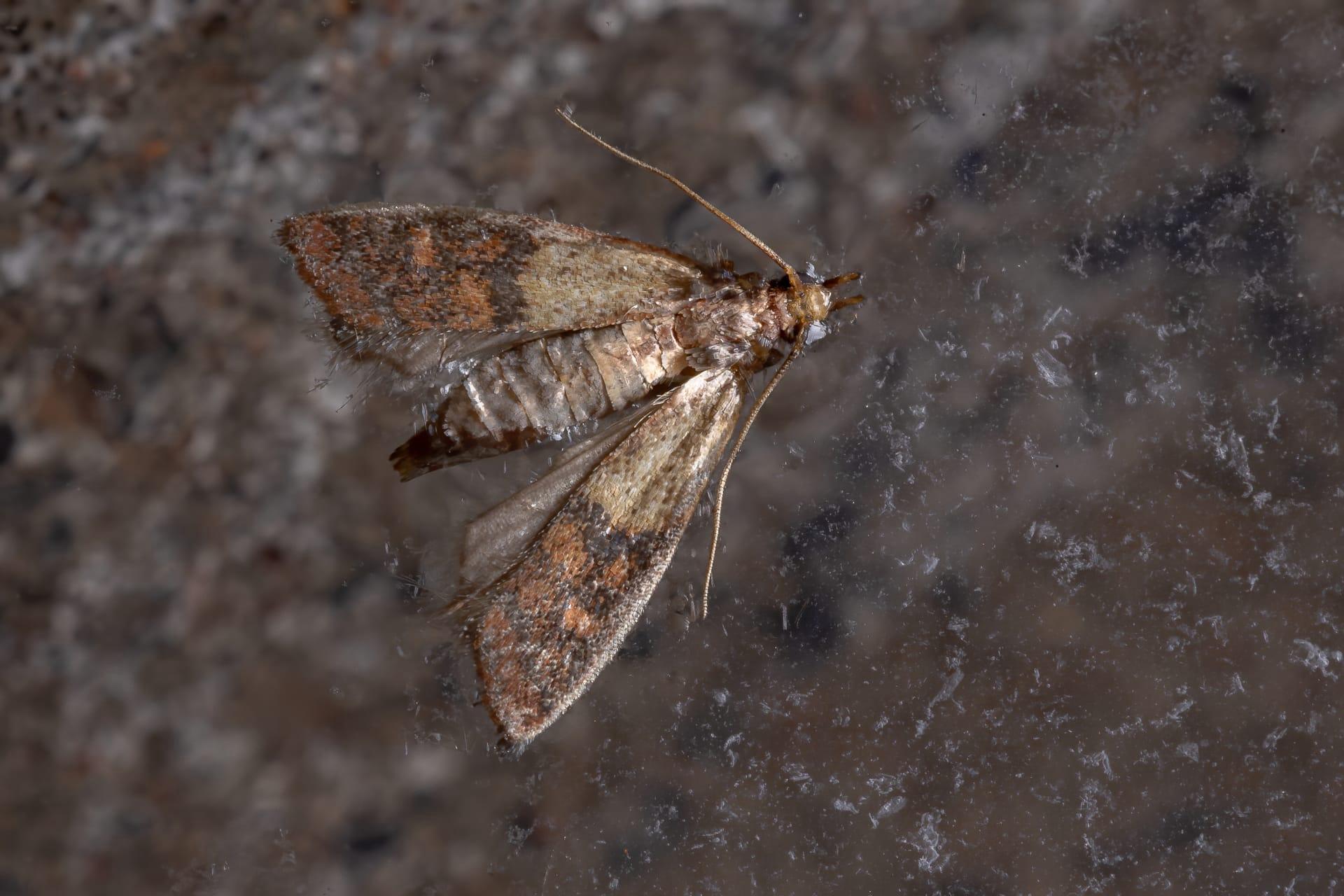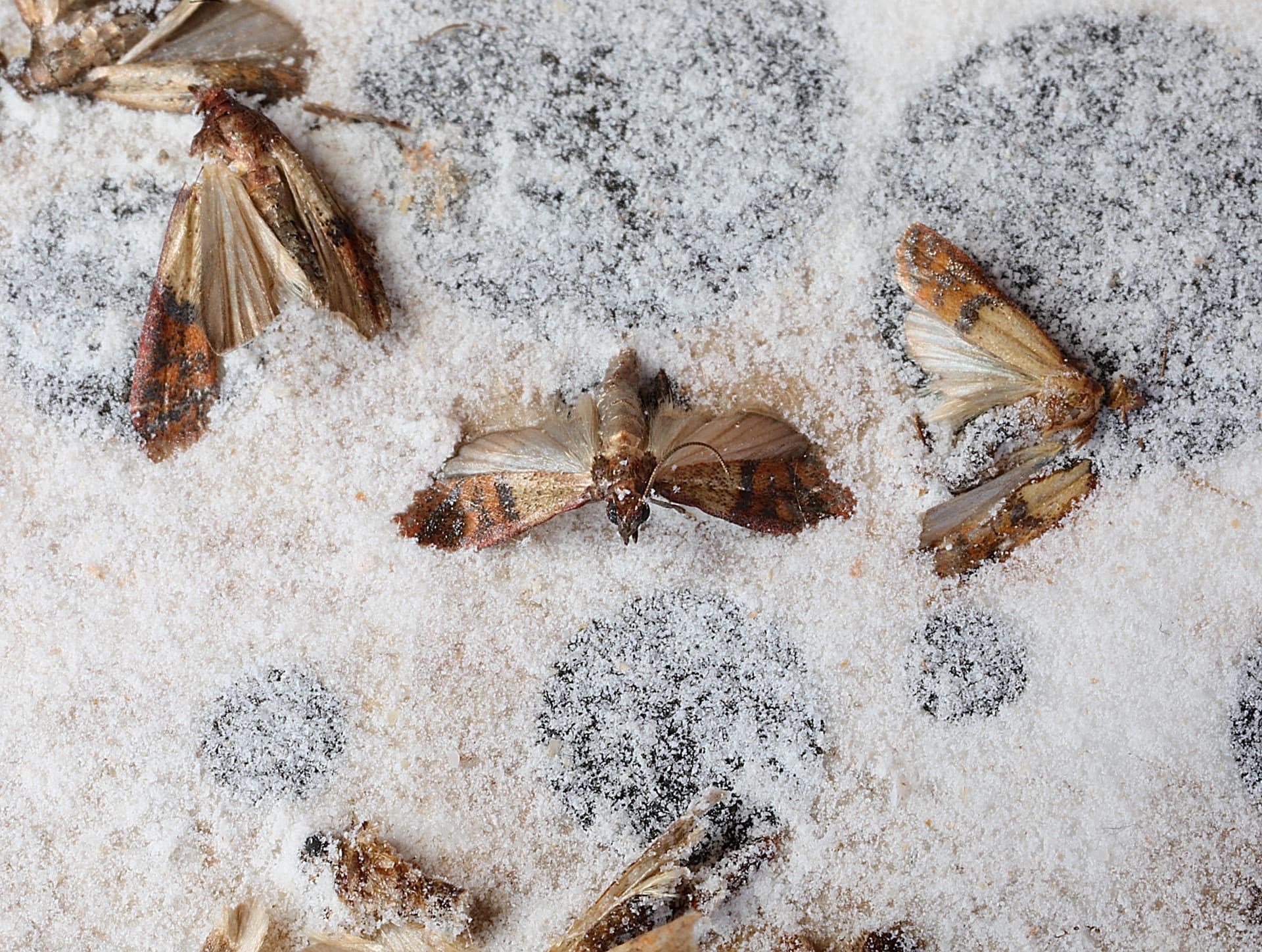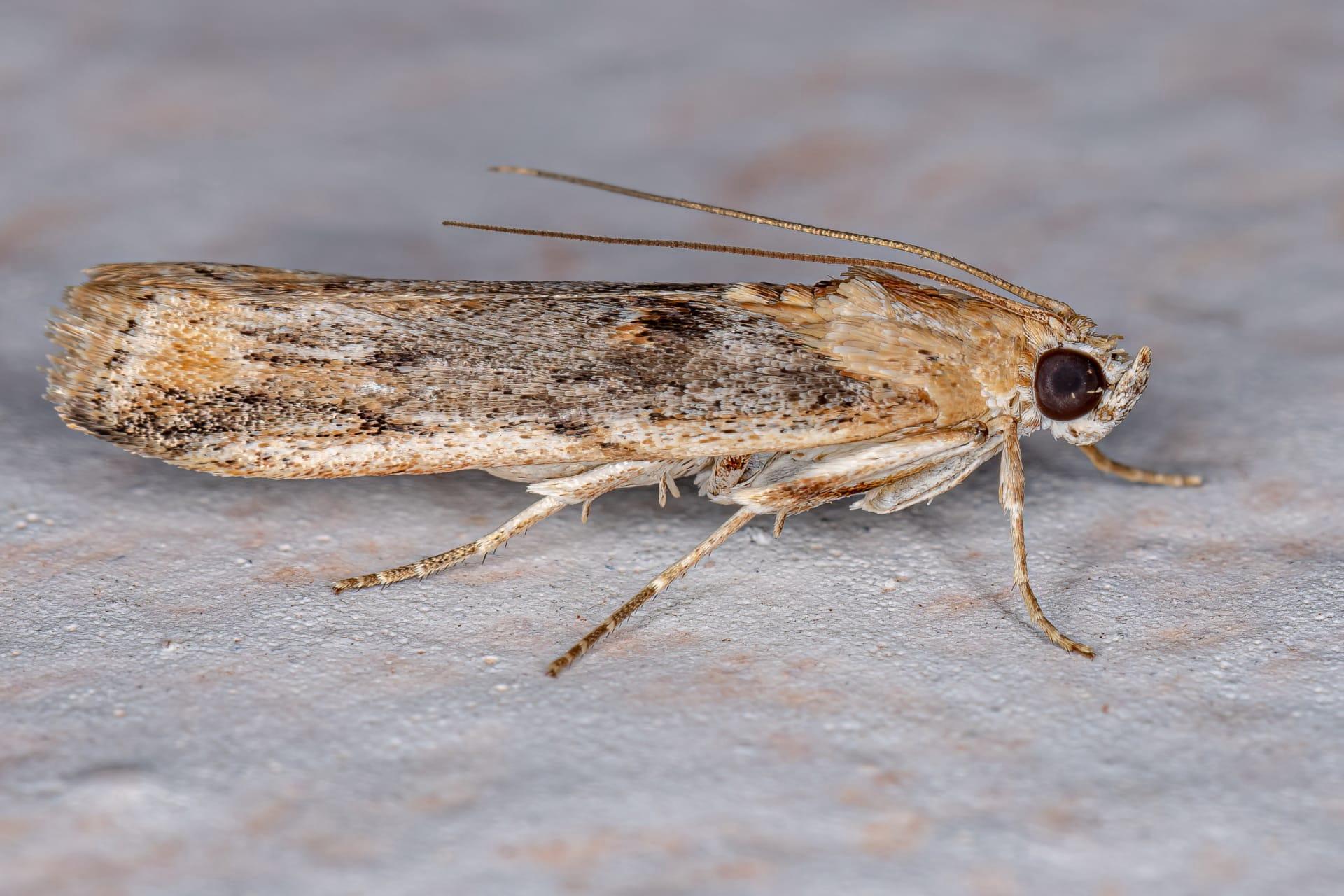Indianmeal Moth Trivia
- Home /
- Trivia Question /
- Animal /
- Indianmeal Moth Trivia
1
Question: What distinguishes the Indianmeal Moth from other common household moths?
Answer: The Indianmeal Moth, scientifically known as Plodia interpunctella, is easily recognized by its distinctive wing pattern. Its forewings are uniquely colored with a blend of gray and copper-red, while the hindwings are a more uniform grayish-white. This moth measures about 8-10 mm in length with a wingspan of approximately 16-20 mm. Another key feature is their ability to infest a wide range of dry stored food products, which is less common among other household moths.
Question: How long is the life cycle of an Indianmeal Moth?
Answer: The life cycle of an Indianmeal Moth, from egg to adult, typically spans 30 to 300 days. This variation largely depends on environmental conditions, particularly temperature and humidity. Eggs are tiny, measuring about 0.5 mm, and are laid directly on food sources. Larvae, which are the primary damaging stage, can be up to 12-15 mm in length. The pupal stage lasts about 15-20 days before emerging as adults.

2
Question: Are Indianmeal Moths harmful to humans?
Answer: Indianmeal Moths themselves are not harmful to humans as they do not bite or sting. However, their presence can indicate an infestation in stored food products. Consuming food contaminated by their larvae can lead to gastrointestinal discomfort due to the presence of their waste and webbing in the food. It's essential to properly store dry goods and maintain cleanliness to prevent infestations.
Question: Can Indianmeal Moths infest refrigerated or frozen foods?
Answer: It is a common misconception that Indianmeal Moths can infest refrigerated or frozen foods. In reality, these moths and their larvae are not capable of surviving in such cold temperatures. They thrive in warmer environments and are typically found in pantry foods that are stored at room temperature, like grains, nuts, and dried fruits.

3
Question: What attracts Indianmeal Moths to homes?
Answer: Indianmeal Moths are primarily attracted to homes by the availability of stored food products. They have a strong preference for grains, dried fruits, nuts, cereals, and a variety of processed food items. These moths can also enter homes through packaged goods that are already infested, making it crucial to inspect grocery items before storage.
Question: How effective are natural repellents against Indianmeal Moths?
Answer: Natural repellents like bay leaves, lavender, and peppermint are popularly believed to deter Indianmeal Moths. While these might have a minor repellent effect, they are not entirely effective in controlling or preventing infestations. The best way to prevent an infestation is through proper storage of food in airtight containers and maintaining cleanliness in storage areas.

4
Question: Can Indianmeal Moths fly long distances?
Answer: Indianmeal Moths are not known for long-distance flight. They are weak fliers and typically flutter about in short, erratic patterns. This behavior is more common near infestation sites, such as pantries or cupboards. Their limited flight range means infestations are often localized, making it easier to control them within confined areas.
Question: Do Indianmeal Moths have any natural predators?
Answer: Yes, Indianmeal Moths do have natural predators which play a role in controlling their population in the wild. These include certain species of wasps, like Trichogramma, which parasitize the eggs of the moths. In addition, some small birds and insectivorous animals may feed on the adult moths. However, these natural predators are less effective in indoor environments.

5
Question: What is the impact of Indianmeal Moths on commercial food industries?
Answer: Indianmeal Moths can have a significant impact on commercial food industries. They are considered one of the most troublesome pests in food processing and storage facilities. Infestations lead to contamination of stock, resulting in financial losses due to damaged products and the costs of pest control measures. Regular monitoring and preventive strategies are crucial in these environments.
Question: Can lighting be used to control Indianmeal Moth infestations?
Answer: While lighting itself cannot control infestations, certain types of lights, like pheromone traps or ultraviolet insect light traps, can be used to monitor and reduce the population of Indianmeal Moths. These traps attract and capture adult moths, helping to identify infestation areas and gauge the severity of the problem. However, they should be used in conjunction with other control methods for effective management.